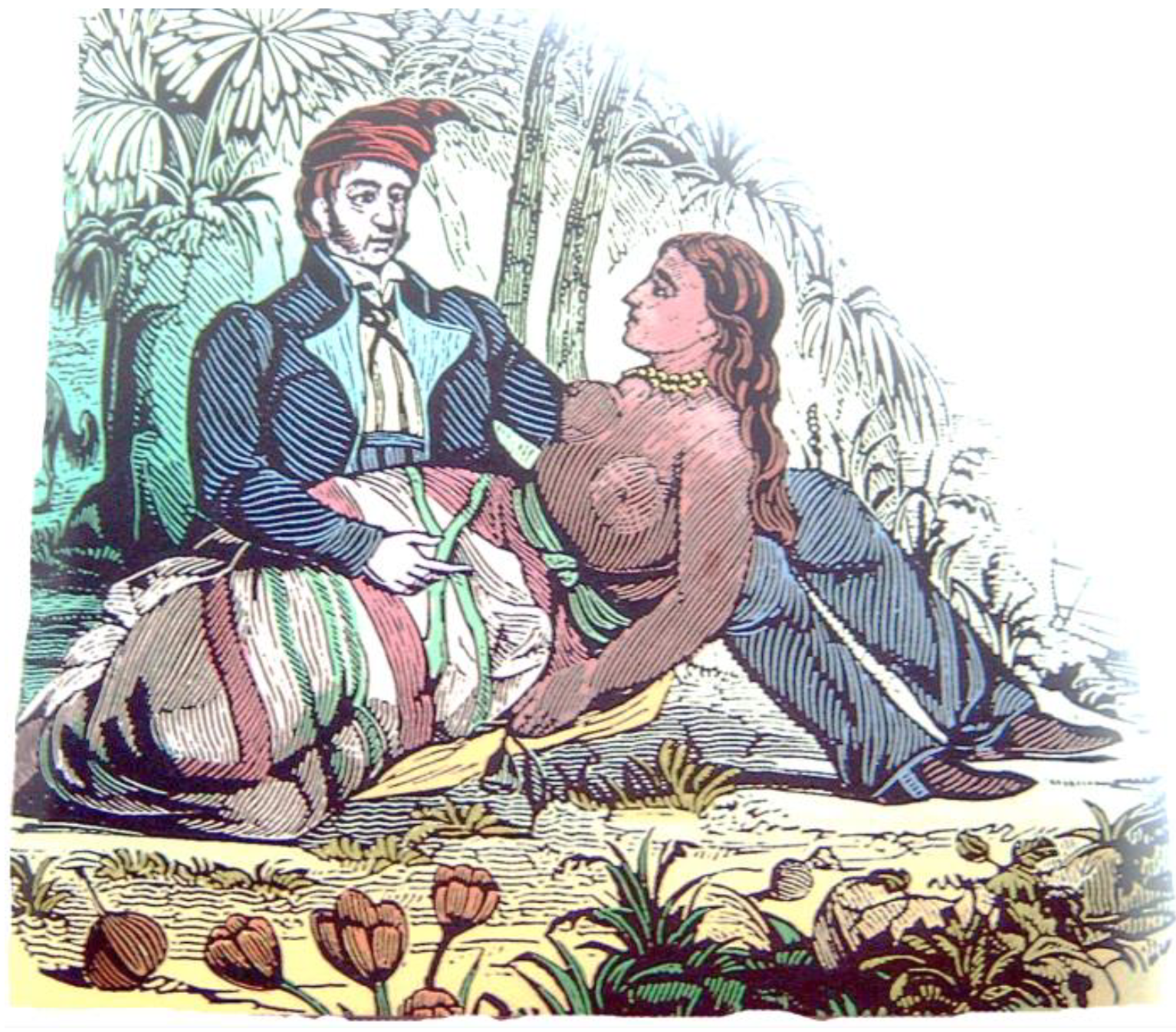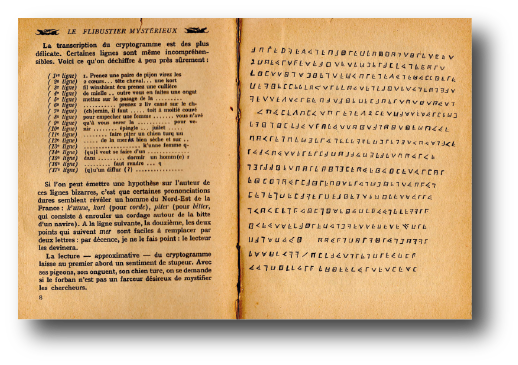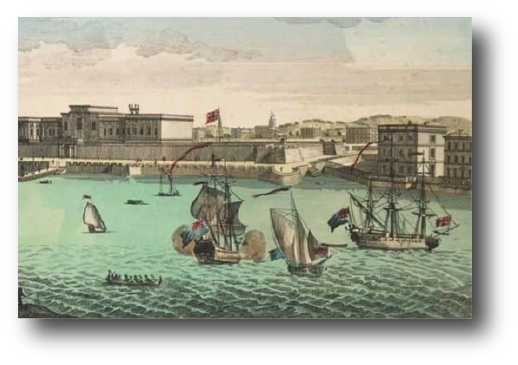THE PIRATE WARLORD

The many published accounts of Madagascar pirates tend to romanticize the story of their lives. The local women were depicted as very willing to engage in relationships with male visitors, leading to idealized imagery as shown here of a sailor with a Malagasy woman in his arms. In reality, the pirates were tolerated only insofar as they were useful. Their ‘wives’ were in fact often socially well placed, and viewed the pirates as expendable trade partners, while local rulers welcomed their fighting prowess in skirmishes with hostile neighbours. In this society, it was possible for a skilled battle leader to gain a foothold in the service of a local ruler, but this position would likely only be temporary as power passed from one group to another, and was always one which required constant surveillance. In straitened circumstances, La Buse and his remaining crew found a protector in Ratoukafe, the Sakalava king of Massali [Mahajanga] and, with the 50,000 strong royal army, to help him, the ex pirate captain became a local warlord, policing the coastal regions around Foulepointe [Mahavelona]. He thus engaged in warfare on behalf of the king, and is reputed to have taken part in the slaughter of around 3,000 Malagasy who belonged to a rival faction.
For more information about La Buse’s career, follow this link to purchase a copy of “LA BUSE: The Life and Legend of French Pirate Olivier Le Vasseur” (e-book).
Click on the picture for a sample.
All articles Cryptogram
The cipher that has been sprouting the fantasies of many people in all its aspects for 90 years.
All articles La Buse
The life and work of the most famous French pirate of the 18th century.
All articles Backgrounds
Stories and history about the “Golden Era of Piracy”, La Buse and the cryptogram.






